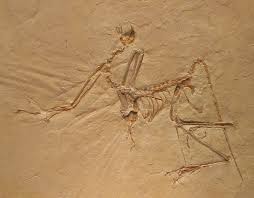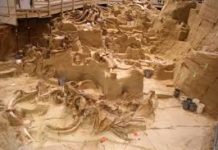Scientists have examined a fossil of a baby bird that lived 127 million years ago during the Early Cretaceous Period, and it is one of the smallest bird fossils ever found. It is also noteworthy for being nearly complete. The researchers reported the results of their study in the journal “Nature Communications.”
Scientists had actually found the fossil many years ago in Spain’s La Hoyas site, but they lacked the technology to properly study it. They therefore simply put the fossil aside.
Fossils of birds from the Early Cretaceous are rare, and fossils of baby birds are “the rarest of the rare.” The chick belonged to an extinct bird group called Enantiornithes. Members of this group typically looked like modern birds, but they had clawed fingers on their wings and toothed beaks.
The baby bird, which died shortly after hatching, weighed 10 grams (0.35 ounces) and was slightly shorter than a human little finger. Researchers from Spain, Sweden, the UK and the US studied the chick’s fossilized bones under synchrotron radiation, which is used to examine tiny objects. Analysis of the bones indicated that the hatchling probably could not yet fly, for the cartilage in its sternum or breastbone had not yet completely ossified or turned into bone. In modern birds, the breastbone is among the last bones to become fully ossified.
Baby birds can be altricial or precocial. Altricial birds are helpless at hatching and need their parents’ care, while precocial birds are capable of at least some self-care. Precocial birds like chickens can typically walk shortly after hatching, for example, while altricial birds can’t. Examining a newly-hatched bird’s skeleton can help researchers determine where it fell along the altricial/precocial spectrum, for precocial birds have more completely ossified skeletons at hatching than do altricial birds.
Researchers had found other juvenile specimens of the Enantiornithes group, and their skeletons were more characteristic of precocial birds. The new chick, however, had some altricial traits that indicate a greater diversity in Enantiornithes development than had been previously seen.











